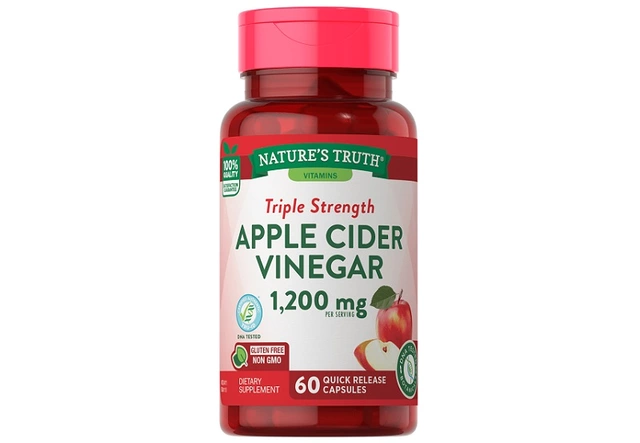Choosing the right medication when you're battling parasites gets tricky fast. Sure, Stromectol (known mostly for its active ingredient, ivermectin) is sometimes the go-to, but it isn't always available—or even the best call, depending on what you're treating or your own health profile. Believe me, after wrangling a bearded dragon with a worm issue (Spark was not amused), you start wishing for a simple comparison chart for all these meds.
The twist: different drugs target different critters. And every option comes with its own ups and downs. Whether you’ve heard about Levamisole from pet forums, or wondered if albendazole can really handle more types of worms, you’re not alone. Some alternatives aren’t even approved for humans everywhere, so knowing the pros and cons before going down the rabbit hole (or the roundworm) makes a big difference.
This guide spells out nine common Stromectol alternatives. For each one, you’ll see exactly what it does, how it stacks up, and things that might make you hesitate—or steer you toward asking your doctor about it. No fluff, just what actually matters in everyday, real-life decision-making.
- Levamisole
- Ivermectin
- Mebendazole
- Albendazole
- Pyrantel Pamoate
- Thiabendazole
- Nitazoxanide
- Diethylcarbamazine
- Praziquantel
- Final Thoughts and Comparison Table
Levamisole
Levamisole doesn’t have the star power of Stromectol alternatives like ivermectin, but in the world of worm-busting meds, it’s worth paying attention to—especially if you’re talking livestock or pets. Originally used as a dewormer for cattle, Levamisole’s made its way into human medicine, mainly for special cases. It’s not the first pick for most parasite problems, but it does double duty: it wipes out parasites and quietly tweaks the immune system along the way.
Doctors sometimes reach for Levamisole with tough-to-treat roundworm or whipworm cases, especially when other meds aren't an option or haven’t worked. You’ll also spot it in combo treatments for diseases like ascariasis and in veterinary clinics for pigs, sheep, or yes—even stubborn reptiles like my bearded dragon, Spark. But it’s got a narrow lane; it isn’t a jack-of-all-parasites.
Pros
- Dual action: Not just an antiparasitic—Levamisole stimulates parts of the immune system, which can sometimes help fight the infection.
- Experience in animals and humans: There’s robust use in the veterinary field, and it’s had select use in human medicine in places where other antiparasitic drugs fell short.
- Alternative for resistance: Sometimes parasites get resistant to meds like mebendazole, and Levamisole steps in as a backup.
Cons
- Toxic side effects: It’s linked to some rough reactions in humans—like a lowered immune cell count (agranulocytosis), which can get dangerous fast. That’s a deal-breaker for many doctors.
- Not for most people: This is not an everyday prescription—you’ll barely see Levamisole on pharmacy shelves for human use in the U.S. or Western Europe.
- Limited data in humans: While there’s a big pile of studies about animals, there just isn’t much modern human research. Most of the old data comes from regions outside North America and Europe.
Just to give you an idea of how Levamisole stacks up, here’s a quick dose comparison with other common treatments for intestinal worms:
| Drug | Common Use Dose (Adults) | Primary Use |
|---|---|---|
| Levamisole | 150 mg single dose | Roundworm, whipworm |
| Ivermectin | 200 mcg/kg single dose | Strongyloidiasis, onchocerciasis |
| Mebendazole | 100 mg for 3 days | Many intestinal worms |
Levamisole’s unusual side effects and its limited approval mean it tends to stay in the toolbox for special jobs—so if you see it mentioned, definitely get your doctor’s full opinion before using it. But for certain stubborn parasites, it’s a reminder that old-school drugs can still have a place when newer ones aren’t cutting it.
Ivermectin
Out of all the Stromectol alternatives, none grab more headlines than good old ivermectin. It’s actually the main ingredient in Stromectol itself, but you’ll see ivermectin sold under its own name for all sorts of uses—from wiping out parasites in people to keeping your pets and farm animals worm-free. So, if you’re searching for a plan B because Stromectol is out of stock or just too expensive, you’re really talking about generic ivermectin.
Why is it so popular? Ivermectin’s a straight shooter against a bunch of nasties: roundworms, scabies, lice, and even strongyloides. The World Health Organization still lists it as an essential medicine. It works by basically paralyzing and killing off worms and mites, making it one of the most versatile antiparasitic drugs around.
For humans, it’s used for things like:
- Strongyloidiasis (a gut infection from a tricky little worm)
- Onchocerciasis (river blindness)
- Scabies—especially the stubborn, crusted kind
- Head lice when shampoos just aren’t cutting it
But not every battle is the same. Dosing can get complicated, especially for kids or anyone with liver issues. Treatment can range from a single tablet to several rounds, depending on what you’re dealing with. Oh, and keep in mind: ivermectin doesn’t touch all parasites—tapeworms, for example, laugh it off. You’ll need something different for those.
Pros
- Proven effectiveness for a wide range of parasites
- Usually well-tolerated (most people only feel a little queasy or dizzy)
- Available as both prescription and veterinary medication
- Affordable and easy to find in many places
Cons
- Won’t work on all worms—no effect on tapeworms or some flukes
- Some resistance showing up, especially in countries where it’s heavily used
- Older adults and people with liver problems may need extra caution
- Side effects: mild in most, but rarely it can cause rashes, diarrhea, or low blood pressure
- Mixing it with certain medications can mess with how your body processes it
One surprising stat: A 2022 CDC report showed that more than 30 million people get treated with ivermectin worldwide every year. So, if your vet prescribes it for your bearded dragon’s mites, or your doc suggests it for a stubborn parasitic infection, you’re definitely not alone.
Mebendazole
If you're talking Stromectol alternatives, mebendazole is a name that pops up all the time—especially for folks dealing with common intestinal worms. Doctors prescribe this drug for roundworms, whipworms, hookworms, and pinworms. It gets right to the gut, stopping these little nuisances from absorbing the sugars they need to survive. Once that happens, the worms die off, and your body flushes them out.
Here’s something interesting: in one of the biggest studies on deworming in schools, kids treated with mebendazole had higher rates of clearing out certain worms compared to placebo—sometimes up to 80-90% success for pinworms. It isn’t a miracle worker for every type of worm, but for the classics, it’s reliable.
Pros
- Works well on the most common gut worms—especially pinworm and whipworm.
- Usually involves just one to three days of dosing, so you don’t have to mess with a long routine.
- Available in chewable tablets, making it easy for kids (and anyone who hates swallowing pills).
- Minimal absorption by the rest of the body, so side effects stay pretty mild for most people.
Cons
- Not effective for every parasite—tougher worms like tapeworms and some flukes barely blink at it.
- Some rare side effects like belly pain, headache, or rash. Long, high-dose courses could affect the liver.
- Not recommended during pregnancy, especially in the first trimester.
- Resistance is popping up, especially in places where it’s used a lot.
For families that keep pets—like my cat Onyx, who never misses a chance to nose into dirt—mebendazole is also sometimes used off-label for critters, though you should always check with a vet first. The short treatment window is super convenient if you’re juggling busy schedules or stubborn kids.
| Condition | Mebendazole Cure Rate |
|---|---|
| Pinworm | ~90% |
| Whipworm | ~70-80% |
| Hookworm | ~65-80% |
| Tapeworm | <50% |
All in all, mebendazole is a staple for beating the most common types of worms in people, without a lot of hassle or side drama. If you’re asking your doctor about antiparasitic drugs for yourself or your kids, this one’s usually on the short list.
Albendazole
Out of all the Stromectol alternatives, Albendazole stands out for how much ground it covers. Doctors reach for this one when common roundworms, tapeworms, or even those nasty whipworms are in play. It’s on the World Health Organization’s list of Essential Medicines, which tells you it’s trusted in a lot of tough situations worldwide.
Albendazole works by straight-up blocking the worms’ ability to absorb what they need to survive inside your body. The worms starve and die off. If you’ve got a stubborn infection, sometimes you need a longer course, but for stuff like pinworms, a single dose can actually do the trick.
Pros
- Broad activity: Tackles several different gut worms, not just one family of parasites.
- Good for extra-intestinal infections: Used for conditions like neurocysticercosis (when pork tapeworms hit your brain).
- Backed by lots of research: It’s been the standard for decades, so doctors know the side effect profiles and what to watch out for.
- Easier dosing for most people: Sometimes one pill is all you need.
Cons
- Not for everyone: Pregnant women and young kids need to avoid it unless a doctor says otherwise.
- Can mess with your liver: If your liver isn’t in top shape, this could be risky, so most doctors run bloodwork first or during treatment.
- Some drug interactions: Folks on anti-seizure meds or steroids need to mention that right away.
- A few side effects: You might get a headache, belly pain, or dizziness during the course.
In some areas with regular mass drug campaigns, Albendazole is a frontline choice because it works for so many—a single round can reduce infections in whole communities. Here’s a quick look at how effective it is by infection type:
| Worm Type | Albendazole Effectiveness (%) |
|---|---|
| Pinworm | >90% |
| Whipworm | ~60% |
| Roundworm | ~80% |
| Hookworm | ~70% |
If you're weighing Stromectol alternatives, this one usually comes up first unless there’s a really specific reason not to use it. Always double-check with your doc, though, especially if you’re already taking something for another health issue or have concerns about side effects.
Pyrantel Pamoate
If you’ve dealt with pinworms, you’ve probably run across Pyrantel Pamoate. It’s a tried-and-true over-the-counter choice for common intestinal parasites in both humans and pets. You’ll see it under brands like Reese’s Pinworm Medicine for people and as a go-to wormer for cats and dogs (yeah, even my cat Onyx has had his share).
This drug works by paralyzing worms in your digestive tract, so they get flushed out naturally when you go to the bathroom. That makes it a bit different from drugs that kill parasites outright. The result? Fewer side effects and a pretty gentle experience—even for kids.
"Pyrantel pamoate is a safe and effective treatment for enteric nematode infections, particularly in the treatment of pinworm and roundworm," says the CDC. "Its over-the-counter availability makes it the first-line choice in many cases."
Here’s why people keep reaching for it—and a few things to watch out for:
Pros
- Readily available without a prescription in many countries.
- Works fast: Most studies show pinworm symptoms clearing within 48 hours.
- Safe for children as young as 2 years old and for adults.
- Minimal side effects—usually just mild stomach upset or headache.
- Rarely leads to drug resistance, so it’s stayed effective for decades.
Cons
- Only works on a small range of parasites—mainly pinworm, roundworm, and hookworm. Not effective for tapeworm or whipworm.
- Doesn’t kill parasite eggs. You’ll need a second dose in two weeks to catch new hatchlings.
- People with liver problems should be careful—ask your doctor first.
- Tastes chalky (kids notice!), though mixing with a little juice helps.
Pinworm infections affect up to 40 million people a year in the U.S. alone. That’s a huge need for a simple drug that’s easy to get and use. Here’s a quick look at how Pyrantel Pamoate stacks up against other Stromectol alternatives with over-the-counter options:
| Drug Name | OTC Availability | Main Parasites Treated |
|---|---|---|
| Pyrantel Pamoate | Yes | Pinworm, roundworm, hookworm |
| Mebendazole | Some countries | Pinworm, roundworm, whipworm |
| Ivermectin | No (Rx only in U.S.) | Roundworm, strongyloides, others |
If you’re hunting for something simple, effective, and easy to grab at the local pharmacy, Pyrantel Pamoate is usually your best bet for the parasites it covers. Just don’t forget that crucial second dose—and maybe hide it in apple juice if your kid is picky.

Thiabendazole
Thiabendazole is one of those Stromectol alternatives that’s mostly been around since the 1960s. It’s used as an antiparasitic to fight off things like threadworm (strongyloidiasis), cutaneous larva migrans (that itchy rash from hookworm larvae crawling under the skin), and sometimes as a backup for other tough worms that just won’t quit. You might spot it more in vet clinics these days—my bearded dragon Spark got some for a parasite scare—but it’s still on the radar for certain stubborn human cases, especially when other meds can’t be used.
The way thiabendazole works is by disrupting worm metabolism, essentially starving them out. It mostly goes to work on intestinal and tissue-dwelling larvae. But heads up: it has a reputation for nasty side effects, so it's definitely not the first thing doctors reach for if you've got options.
Pros
- Works fast on some tough-to-treat parasites, especially strongyloidiasis.
- Also useful against fungal infections in agriculture—not just people or pets.
- Used as a "second-chance" treatment if other antiparasitic drugs don’t work or aren’t available.
Cons
- High risk of side effects like dizziness, nausea, vomiting, and, more rarely, liver problems.
- Not usually a first-line choice for most parasite infections due to these side effects.
- Can interact with a bunch of other meds, including blood thinners and seizure drugs.
- Not recommended for pregnant women or kids under two unless it’s absolutely necessary.
According to some solid data from CDC guidelines, thiabendazole cures over 90% of patients with uncomplicated strongyloidiasis. But those side effects? Over a quarter of patients report something unpleasant, which is why doctors kind of see it as a "break-glass-in-case-of-emergency" option now.
| Infection Type | Thiabendazole Cure Rate | Common Side Effects |
|---|---|---|
| Strongyloidiasis | 91% | Nausea, dizziness, rash |
| Cutaneous Larva Migrans | 85% | Itching, GI upset |
All in, if you’re weighing Stromectol alternatives, thiabendazole does the job for some problem parasites, but it’s rarely Plan A because of how rough it can be on your system. Always make sure to double-check allergies, possible drug interactions, and your own health situation with your doctor before considering this one.
Nitazoxanide
When you’re looking beyond Stromectol alternatives, Nitazoxanide often pops up—especially if you’re battling gut parasites that simply aren’t fazed by others. Originally cooked up to handle Cryptosporidium and Giardia infections, it’s now used for a range of parasites and even a few viruses. If you ever googled 'how to stop relentless diarrhea from a mystery bug,' you’ve probably stumbled onto this name.
Nitazoxanide’s big strength? It knocks out both protozoa (those single-celled troublemakers) and some intestinal worms. You swallow a tablet or drink a liquid dose, usually twice a day for three days. For many folks, symptoms clear up fast—sometimes in just two or three days.
Doctors trust it for:
- Giardiasis (that’s the pesky parasite from dodgy water or farm pets)
- Cryptosporidiosis (a big risk for kids and anyone with a weak immune system)
- Some tapeworm infections (though not all)
If you’re looking for something safe for children above age 1, Nitazoxanide is often considered. A 2022 study showed that about 80% of kids treated for giardiasis stopped having symptoms within 72 hours—a pretty good track record for such a simple regime.
Pros
- Effective against multiple parasites—not just worms, but protozoa too
- Short treatment—usually three days
- Generally well tolerated, even by kids
- Available in both tablet and liquid forms
Cons
- Not much use against roundworms or strongyloides—so check specifics first
- Side effects can include nausea, headache, or yellowish urine (which freaks people out but is harmless)
- Cost is sometimes higher than older drugs
- Rare interactions with other meds (especially blood thinners or anti-seizure drugs)
Quick comparison to the others? Nitazoxanide stands out for its short course, kid-friendliness, and coverage of both worms and protozoa. If you’re not sure what parasite you’re fighting, or need something outside the old-school meds, it’s definitely worth bringing up with your doctor.
Diethylcarbamazine
If you're looking at antiparasitic drugs for tough cases, Diethylcarbamazine (folks often call it DEC) is worth knowing about. It’s mostly used to treat filarial infections, like lymphatic filariasis (elephantiasis) and some cases of loiasis. It isn’t your everyday pharmacy pick, but in places where these parasites are common, health authorities hand it out by the ton—literally, during mass drug administration campaigns. That alone says something about its impact.
Here’s the cool bit: DEC works by stunning and killing the worms floating around in your blood. The treated patient’s immune system kicks in to sweep up what’s left. It's usually given as pills, and the typical course lasts several weeks, which can test your patience if you hate taking meds.
Pros
- One of the top meds for treating lymphatic filariasis, a disease that affects millions worldwide
- Also covers loiasis and tropical pulmonary eosinophilia—rare, but just nasty if you get them
- Widely used in public health programs, so its safety profile is well-known
Cons
- Not for every type of worm and doesn’t work for tapeworm or roundworm infections common in Western countries
- Can trigger allergic-type reactions (headache, fever, itching) due to your immune response, especially as worms start dying off
- Not sold everywhere; more common in regions where the target diseases are found
One strange tip? If you’re living or traveling in an area known for lymphatic filariasis, DEC is sometimes offered free as part of local health drives. In some places, health workers come door to door with it during annual campaigns.
| Use | Main Parasites Targeted | Typical Treatment Duration |
|---|---|---|
| Lymphatic Filariasis | Wuchereria bancrofti, Brugia malayi | 2-4 weeks |
| Loa loa (Loiasis) | Loa loa | 2-3 weeks |
| Tropical Pulmonary Eosinophilia | Filarial worms | 3-4 weeks |
If you've recently traveled to Asia or Africa, or a doctor suspects one of these less common infections, DEC is the name you’ll probably hear. Still, for standard roundworm or pinworm troubles, you’ll want to keep browsing other Stromectol alternatives.
Praziquantel
Praziquantel stands out in the world of antiparasitic drugs because it’s the heavy hitter for treating tapeworms and flukes. If you’re up against schistosomiasis (snail fever) or the kind of tapeworms you get from undercooked fish or pork, this is the drug your doctor will usually grab first. The World Health Organization even puts praziquantel on its essential medicines list. That’s how important it is.
Unlike Stromectol alternatives that focus on roundworms, praziquantel messes with the parasite’s skin so your immune system can finish the job. It’s quick—one dose can wipe out a tapeworm infestation (seriously, the stuff works fast). A lot of folks who travel or volunteer in tropical areas know this med is a true lifesaver.
Pros
- Highly effective against flatworm infections like schistosomiasis and tapeworms
- Usually just a single dose needed (sometimes repeated if it’s a stubborn case)
- Safe for most people, including kids with the right dosage
- Widely used worldwide, so docs are very familiar with it
- Essential medicine in global health programs
Cons
- Won’t work for roundworms, pinworms, or hookworms—totally different beast
- Can cause dizziness or nausea (especially if you have a big parasite load and they all die off at once)
- Kids might hate the taste if they can’t swallow pills—it’s very bitter
- Rare chance of allergic reaction or trouble for people with serious liver issues
Here’s a look at how praziquantel stacks up against other common parasite treatment options when it comes to flatworm infections:
| Drug | Main Target | Typical Dosage | Global Use |
|---|---|---|---|
| Praziquantel | Tapeworms, flukes (flatworms) | Single dose (10–20 mg/kg) | Very common |
| Albendazole | Roundworms, some tapeworms | 1–3 days, varies by parasite | Widespread |
| Pyrantel Pamoate | Pinworms, hookworms (not tapeworms) | Single dose, repeat if needed | Common |
If you end up with a flatworm infection, praziquantel is usually your best friend. Just double-check with your doctor since dosage and timing can depend on your specific case and the parasite causing trouble. And if your pet ever needs it—like if your bearded dragon pulls a Spark and eats something sketchy—ask for dosing help from a vet, not just a people pill bottle.
Final Thoughts and Comparison Table
If you’ve made it this far, you’re probably serious about choosing the right Stromectol alternatives for treating parasites. No one said this stuff was simple. Each drug comes with a different package: one may wipe out roundworms but miss flukes, another might suit you if you’ve got liver issues, or maybe you’re dealing with resistant bugs. Even vets run into these decisions—trust me, I’ve scrambled when Spark stopped eating and the usual meds failed.
Most doctors still lean on time-tested drugs like ivermectin, especially for classic cases, but that’s not a one-size-fits-all answer. Drugs like albendazole and mebendazole hit broad targets and are safe for most people, while options like praziquantel shine in rare tapeworm infections. If you’re tackling something unusual, like filariasis, diethylcarbamazine can be the go-to, but it’s not handy everywhere. And here’s a kicker: some, like Levamisole, are mostly for animals, but they’ve got human uses when nothing else fits.
Always check what’s legal and approved in your country—rules shift all the time, especially with parasite meds. Also, any antiparasitic can cause side effects or drug interactions. Chat with your prescriber; your best bet might surprise you after they see your health history and what you’re battling.
Want a quick side-by-side look? Here’s a table to help you stack up the Stromectol alternatives:
| Drug Name | Main Uses | Pros | Cons |
|---|---|---|---|
| Levamisole | Roundworm infections, some cancers (investigational), used in animals | Both kills parasites and adjusts immune response | Can cause serious side effects, not first-line for most people |
| Ivermectin | Strongyloides, scabies, onchocerciasis | Well-studied, fast-acting for many worms and mites | Not ideal for liver issues; resistance is a concern with some parasites |
| Mebendazole | Pinworm, whipworm, hookworm | Few side effects, safe for kids, covers many worms | Not great against all parasitic species |
| Albendazole | Tapeworms, roundworms, some protozoa | Broad spectrum, part of global programs to fight parasitic infections | Can affect liver, some people get stomach upset |
| Pyrantel Pamoate | Pinworm, roundworm, hookworm | Safe for everyone, including young kids and pregnant women (short-term) | Doesn’t work for all worms |
| Thiabendazole | Threadworm, cutaneous larva migrans | Good for rare skin migration cases | Tough on the stomach; not for prolonged use |
| Nitazoxanide | Giardia, cryptosporidiosis | Covers protozoa that most other drugs miss | Sometimes pricier; may not be available everywhere |
| Diethylcarbamazine | Filariasis, some other rare roundworm diseases | First-choice where available for lymphatic filariasis | Strict distribution controls, tougher to find |
| Praziquantel | Schistosomiasis, tapeworms | Only drug that nails flukes and tapeworms | Can trigger a reaction if heavily infested (as worms die off) |
If you feel lost, keep this chart handy or bookmark the page. Always get advice tailored to your exact issues. Parasites don’t play by one set of rules—neither should your treatment.









